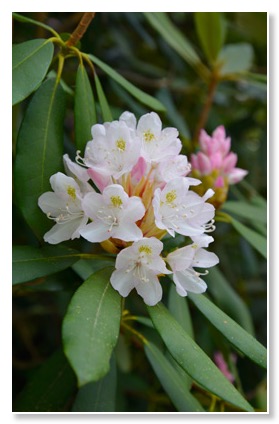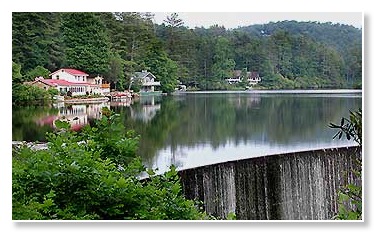12/28/17 11:27
One of the most beautiful times in Highlands and Cashiers is when we are covered in a thick blanket of snow.
This year we started early and big with almost 15 inches of early winter snow on December 9th. It's a time when the sounds of hustle and bustle are muffled and the tweets of

the birds and the whisper of falling snow is a thing to behold.
As we enjoy sitting by the fire and taking a deep breath of relaxation, let us not forget our feathered friends outside who must weather through the cold and bluster.
Remember to keep your feeders filled and the seed dry. Wet seed encourages mold and bacteria which can be deadly to birds, especially when they are physically stressed by the cold weather.
Keep your feeders in a sheltered place out of the wind, but in a location that allows birds to seek refuge in bushes and trees between visits to the feeder.
Last but certainly not least, keep your bird feeders high enough off the ground to prevent bears from paying an unwelcome visit. Those high-priced feeders don't stand a chance against a bear looking for a snack!
08/19/17 13:31
Highlands is a beautiful place to be all year long, but taking time to stroll around town and enjoy the diversity of shops, architecture and landscaping is an easy activity when the weather is great and the flowers are in bloom.

A mountain town at heart, the use of native stone, wood and planting ensures the feeing of "oneness" throughout the city.
Many of our structures are listed on the National Register of Historic Places and are a delight in themselves.
Shown here is the Church of the Incarnation. It is located prominantly on the East end of Main Street and founded in 1875.
The gardens around the church are open and accessable to all who walk by, and are a fabulous example of the gardening skills of the members.06/29/17 14:35
As promised, the Mountain Laurel are starting to show their full potential.
One of the most abundant and prolific flowering evergreens in our area, Kalmia latifolia is found throughout the mountains of North Carolina. Its range is from Alabama up the spine of the Appalachains into Maine.
The flowers range from almost white to a medium pink depending on soil conditions and habitat.

Mountain laurel was first recorded in America in 1624, but named in the 18th century after Pehr Kalm who shipped samples to Carl Linnaeus the Swedish botanist.
The Rhododendron are a sight to see when driving the roads around Highlands and Cashiers - don't miss your chance!
06/02/17 16:23
Mountain Laurel (Kalmia latifolia) is one of the most common evergreen shrubs in the mountains of North Carolina.

This years bloom is far more spectactular than we have seen in decades. One visitor commented today that it is "more beautiful than Calloway Gardens when the azaleas are in bloom."
Mountain Laurel is often confused with its larger leafed cousin Rhododendron - of which Rhododendron maxima is our most prolific species locally. It usually blooms in late June and early July.
If you have the chance to come to the mountains in the next week or so, we promise one of the most breath-taking displays of Mountain Laurel in many years.
Of course, you can alway come back for the native Rhododendron too…
05/09/17 17:35
Spring is one of the most beautiful times of the year in the mountains of Western North Carolina and there are few rivals to the Rhododendron - one of the showiest, first hints that Summer is almost here. Our unusually mild Winter brought them out earlier this year than recent colder months.

Besides the hundreds of hybrids, there are over 1000 specie of native rhododrendron spread across the globe.
In the Highlands and Cashiers area (and a little beyond), there are 13 specie that can be found in the woods, along creek banks and on ridgetops.
Every time of year is beautiful in our area, but given the chance, don't miss the rhododendrons. The hybrids start about the first of May, the native varieties a few weeks later.
02/17/17 13:27
They start inside the city limits - waterfalls, that is.
Highlands is blessed with having numerous scenic and accessible “water features” that are beautiful throughout the year.
One of the most picturesque draws to anyone coming to Highlands are it’s waterfalls.

Numerous falls are easily accessible/viewable from Hwy. 64 West between Highlands and Franklin. With one (Bridal Veil Falls) accessed by driving underneath!
As you drive towards Franklin you will pass the spillway of Lake Sequoyah (above) and then about 1/4 mile further pass under and behind Bridal Veil Falls. After Bridal Veil comes the newly renovated parking and viewing area for Dry Falls. The US Forest Service has finally revamped the access and built a new elevated viewing platform at Dry Falls. Of course, you can still walk down the slippery steps and experience the spray from behind the falls.
As you travel further you will need to park along the road and “explore” some of the other falls which can’t be seem from the road but are only a few steps away. The next falls which are seen from the road are Quarry Falls - locally known as Bust-Your-Butt - where the kids love to jump into a pool at the bottom... must be a rite of passage for youthful testosterone! The last and largest falls on the Cullasaja River is Cullasaja Falls. Located in “the gorge”, parking is very limited along the road and a not the best spot for cars, but worth the risk.
We can not express firmly enough how dangerous these and all waterfalls are to the daring and unwary visitor. Numerous people are injured or die every year by slipping from waterfalls or being pinned by water pressure.
Have fun but don’t be a statistic!


 the birds and the whisper of falling snow is a thing to behold.
the birds and the whisper of falling snow is a thing to behold. A mountain town at heart, the use of native stone, wood and planting ensures the feeing of "oneness" throughout the city.
A mountain town at heart, the use of native stone, wood and planting ensures the feeing of "oneness" throughout the city.

 This years bloom is far more spectactular than we have seen in decades. One visitor commented today that it is "more beautiful than Calloway Gardens when the azaleas are in bloom."
This years bloom is far more spectactular than we have seen in decades. One visitor commented today that it is "more beautiful than Calloway Gardens when the azaleas are in bloom." Besides the hundreds of hybrids, there are over 1000 specie of native rhododrendron spread across the globe.
Besides the hundreds of hybrids, there are over 1000 specie of native rhododrendron spread across the globe. Numerous falls are easily accessible/viewable from Hwy. 64 West between Highlands and Franklin. With one (Bridal Veil Falls) accessed by driving underneath!
Numerous falls are easily accessible/viewable from Hwy. 64 West between Highlands and Franklin. With one (Bridal Veil Falls) accessed by driving underneath!